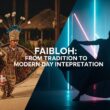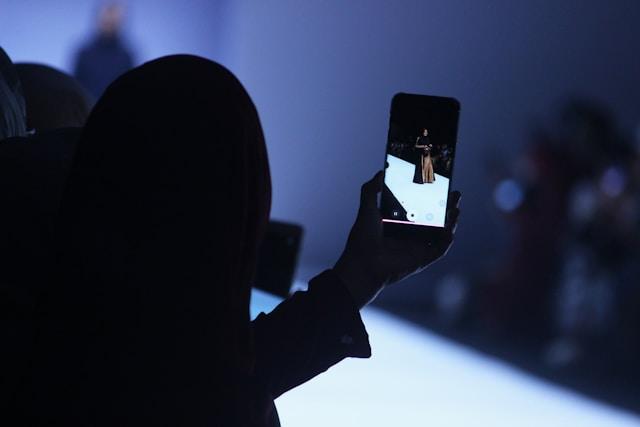The dawn of the 1990s heralded a new force that would redefine the fashion industry: the supermodel. Far more than mere faces for seasonal collections, these models led by Naomi Campbell, Cindy Crawford, Claudia Schiffer, Linda Evangelista, and Christy Turlington ascended to the status of cultural icons. They mergedthe once-separate worlds of high fashion, celebrity, and mass media, and their reign on the runway transformed modeling from a profession into a global spectacle defined by personality, power, and unprecedented star appeal.
Nowhere was this transformation more vividly realized than on the runways of Gianni Versace. The Italian designer understood, perhaps better than anyone, the symbiotic power that erupted whencharisma, spectacle, and design collided. By placing these magneticpersonalities at the heart of his theatrical shows and iconiccampaigns, Versace did more than just harness the supermodelphenomenon he became its principal architect.
The Vision of Gianni Versace
While Gianni Versace had already made his mark in the 1980s with his bold colors and baroque motifs, it was the 1990s thatbecame the crucible for his vision. Through a series of legendary runway shows, he unleashed an aesthetic thattranscended mere clothing. For Versace, fashion was theater: audacious, visceral, and unapologetically sensual.
A true visionary, he was among the first to grasp the phenomenal power of a model’s personality. He rejected the industry’s preference for anonymous faces, insteadchampioning women whose own star power could amplifyhis designs. His runway shows transformed into high-octanespectacles, charged with an electricity that defined the era’ssupermodel glamour.
This philosophy reached its zenith in the iconic Fall 1992 collection, where dramatic, bondage-inspired ensembles mettheir match in equally daring staging and choreography. Thisera also cemented the legend of the Versace black dresses garments that weaponized elegance with a provocative edge, becoming a lasting symbol of the house’s audacious identity.
Models as Muses and Stars
The bond between Versace and the supermodels was a true creative alliance. He treated them not as canvases but as collaborators, and they, in turn, inhabited his vision with fierce loyalty. As Naomi Campbell famously articulated, Versace gave them a voice, offeringa platform to become more than just models—to becomepersonalities.
His shows became legendary as much for the women who walkedthem as for the clothes they wore. Nowhere was this more electricthan at the finale of his Autumn/Winter 1991 show. The moment Campbell, Crawford, Evangelista, and Turlington stormed the runway arm-in-arm, lip-syncing to George Michael’s “Freedom! ’90,” is sealed in fashion lore. It crystallized the spirit of an era: a potent cocktail of beauty, strength, and unapologetic joy.
This narrative extended far beyond the runway, solidified in iconiccampaigns shot by photographic titans like Richard Avedon and Herb Ritts. Through their lenses, the Versace woman was cementedin the public imagination: a figure of unshakable confidence and palpable magnetism. This ideal was a pantheon, with eachsupermodel contributing her own distinct divinity: Schiffer’sstatuesque grace, Evangelista’s chameleonic allure, and Campbell’sformidable power.
Fashion Meets Pop Culture
Versace’s genius could never be confined to the runway. He understood that fashion was becoming a central pillar of popular culture and harnessed the rising power of music videosand celebrity media to place his brand at the heart of the cultural zeitgeist. Strategic alliances with icons like Prince and Madonna, coupled with a commanding presence on red carpets, made Versace synonymous with the intersection of high fashion and global entertainment.
This philosophy also extended to the runway itself, where Versace deliberately blurred the line between fashion show and theatrical performance. For him, a model was never just a mannequin in motion; she was a character, the protagonist of the story he was telling. His shows became legendary for their operaticscale grand narratives told through meticulously choreographedlight, sound, and movement, all designed to provoke emotion and desire.
Perhaps no single garment better encapsulates this power than the infamous black dress worn by Elizabeth Hurley to the 1994 premiere of Four Weddings and a Funeral. Held together by a seriesof oversized, golden safety pins, the dress was a masterful piece of engineering that both revealed and concealed. It was more thanfashion; it was a cultural detonation, a single image that cementedVersace’s status as the ultimate architect of the modern red-carpet moment an event he understood was as much about audacity as itwas about elegance.
A Lasting Legacy
The sudden death of Gianni Versace in 1997 sent a shockwavethrough the fashion world. A visionary was lost, but his philosophyproved indestructible. The principles he championed—the potentfusion of personality, performance, and power—would cast a long shadow over the industry he had so masterfully redefined.
Under the stewardship of his sister, Donatella, the House of Versace did more than survive; it was reborn. She became the keeper of the flame, skillfully translating the codes Gianni had established boldness, glamour, and reverence for female strength for a new millennium. In her hands, the supermodel spirit was never a relic, but a living touchstone for the future.
Decades later, the fashion industry remains irrevocably shaped by the revolution ignited on those Versace runways. The supermodel’slegacy is not confined to archives; it is imprinted on the very DNA of modern celebrity. The blueprint for the model as a multi-hyphenate powerhouse—influencer, entrepreneur, activist—wasforged in that golden age. Ultimately, Gianni Versace did more thanjust dress women; he gave them a stage on which to build empires, a truth that echoes with every star who now commands her ownnarrative.
Reverberations in Today’s Fashion World
While the current fashion landscape has changed significantly becoming more inclusive, diverse, and digitally driven the echoes of the supermodel era are still strongly felt. Designers continue to reference that time, not only for its aesthetic butfor its ethos: fashion as a performance, a spectacle, and a vehicle for self-expression.
Today’s runways still look back to the energy of the 1990s, whether through casting decisions, soundtrack choices, or the architecture of garments. The rise of social media influencers and the cult of the personality can trace part of their lineage to the moment when fashion models became celebrities in theirown right. Gianni Versace was instrumental in initiating thisshift.
Furthermore, vintage Versace pieces have become highlysought-after collector’s items, worn by contemporary stars and featured prominently in exhibitions. Museums and institutions have recognized the artistic and cultural value of the work done during that era, elevating it beyond fashion intothe realm of modern heritage.
Interestingly, the cultural shift also opened discussions aroundthe changing role of beauty in fashion. The supermodel era set standards that were both aspirational and sometimes criticizedfor their exclusivity. Today’s industry seeks to correct that, yetcontinues to admire the unapologetic confidence and elegancethe 1990s icons represented.
It is not unusual to see young designers explicitly channel the legacy of Versace’s golden age replicating the cuts, the attitude, the sensuality that once defined the runway. Some revisit the essence of that time not through literal imitation butby adopting its spirit: the belief that fashion should make one feel invincible.
What began as a series of innovative collections in Milan transformed into a global movement. The charisma of thoseoriginal supermodels and the genius of Gianni Versace forgeda lasting partnership that continues to inspire. Fashion, after all, is more than fabric it is memory, identity, and the constant reinvention of allure.




